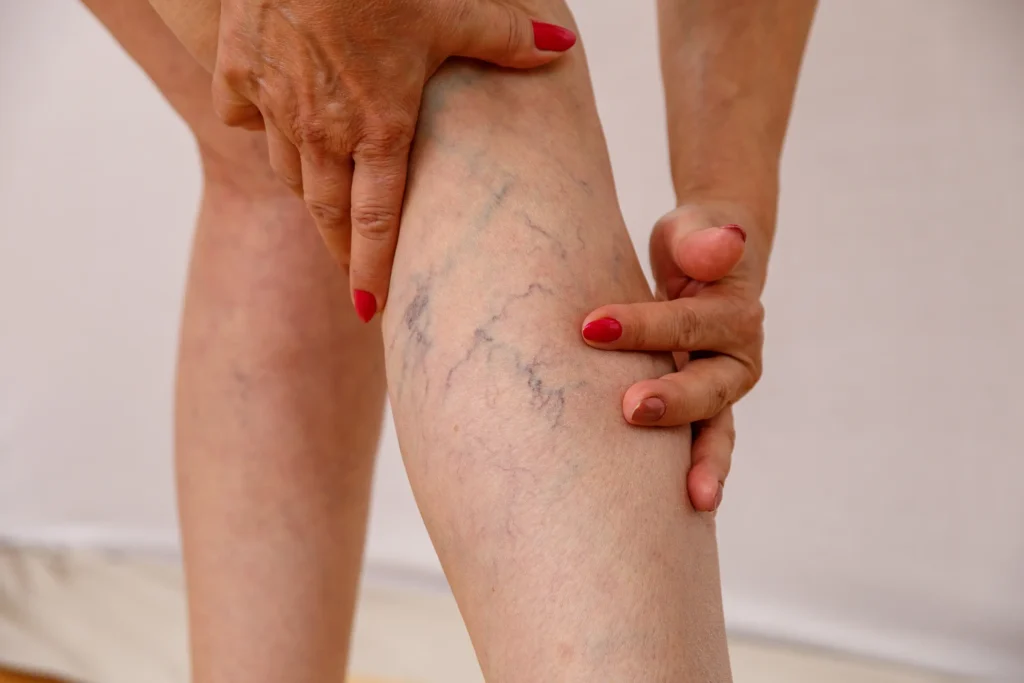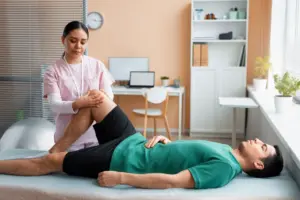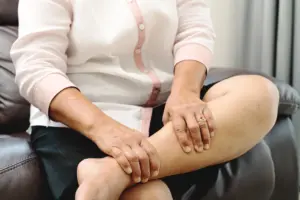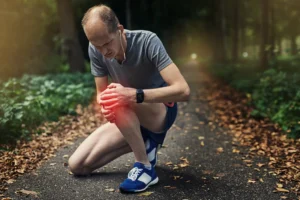
Varicose veins: Whether you’re a teacher, chef, retail worker, or healthcare professional, standing on your feet all day is often part of the job. But while you’re busy taking care of tasks or others, your legs might be quietly paying the price.
Prolonged standing is one of the most common risk factors for varicose veins, those bulging, twisted veins that often appear on the legs and feet. And while they may seem harmless at first, they can lead to pain, swelling, heaviness, and even skin ulcers if left unmanaged.
Here’s what you need to know and what you can do to protect your legs.
What Are Varicose Veins?
Varicose veins develop when the vein valves in your legs weaken, causing blood to pool instead of flowing smoothly back to the heart. Over time, the veins become enlarged, twisted, and visible under the skin.
Also Read | Trump’s legs show signs of common vein condition, not serious illness: White House
They’re more than just a cosmetic concern. Varicose veins can lead to:
- Aching or throbbing in the legs
- Swelling around the ankles
- Skin discoloration
- Itchy or burning sensations
- In severe cases, leg ulcers or blood clots
Why Does Standing All Day Increase the Risk of Varicose Veins?
When you’re standing for long periods without movement, gravity works against you. Blood flow from your legs back to your heart becomes sluggish, increasing pressure in the veins.
Over time, this pressure weakens the valves in your veins, especially if you already have other risk factors such as:
- Genetics
- Pregnancy
- Obesity
- Age over 40
- Lack of physical activity
Doctor-Recommended Tips to Prevent Varicose Veins
If standing is unavoidable, don’t worry; you don’t need to change careers. Instead, try these evidence-based strategies to protect your veins:
Wear Compression Stockings: These are not just for elderly patients. Medical-grade compression stockings gently squeeze your legs to improve blood flow and reduce pressure buildup in your veins. Wear them during work hours, especially if you stand for more than 4–5 hours at a stretch.
Move Around Often: Even small movements help. Shift your weight from one leg to another, do calf raises, or walk in place for a few seconds every 30–60 minutes. Movement activates your calf muscles—your body’s “natural pump” for moving blood back to the heart.
Elevate Your Legs When Possible: After a long day, give your legs a break by propping them up on pillows or against a wall for 15–20 minutes. This reduces swelling and allows blood to drain properly.
Also Read | Sports injuries in athletes: Causes, signs, and treatment options
Watch Your Posture: Avoid locking your knees while standing or crossing your legs when sitting. Both habits can interfere with proper blood flow.
Maintain a Healthy Weight and Stay Hydrated: Extra weight increases pressure on your leg veins. Hydration keeps your blood flow smooth and prevents excessive pooling.
Don’t Ignore Early Symptoms: Heavy legs, mild swelling, or visible veins shouldn’t be brushed off. Early evaluation and lifestyle changes can prevent complications.
You may have to stand for your job, but that doesn’t mean you have to suffer from ugly veins or sore legs. Listen to your legs. Take small steps, literally and figuratively, to care for your circulation. Prevention today could save you from surgery tomorrow.
Disclaimer: This article is for educational purposes only and does not replace professional medical advice. For any persistent issues, please consult your healthcare expert.






